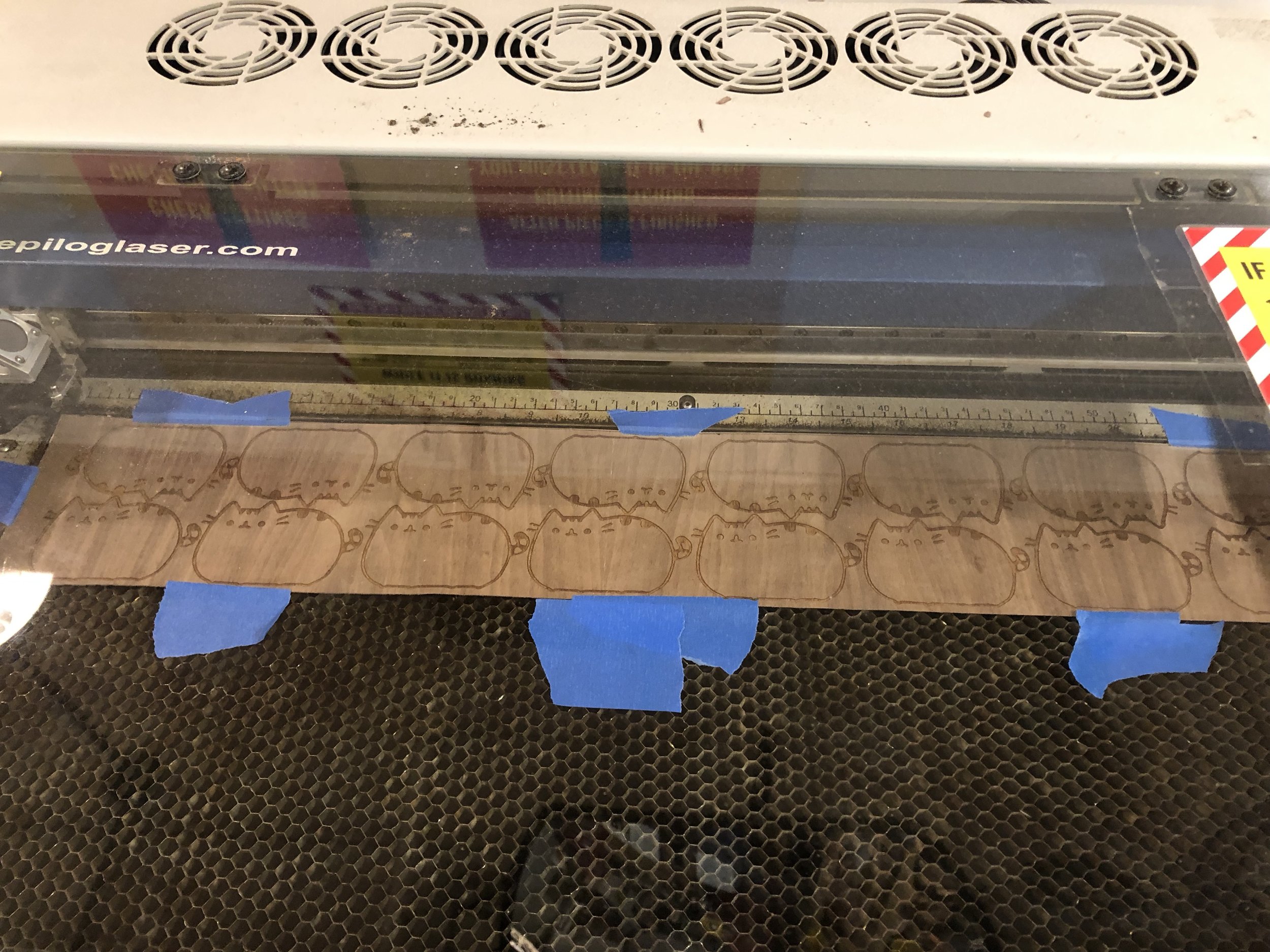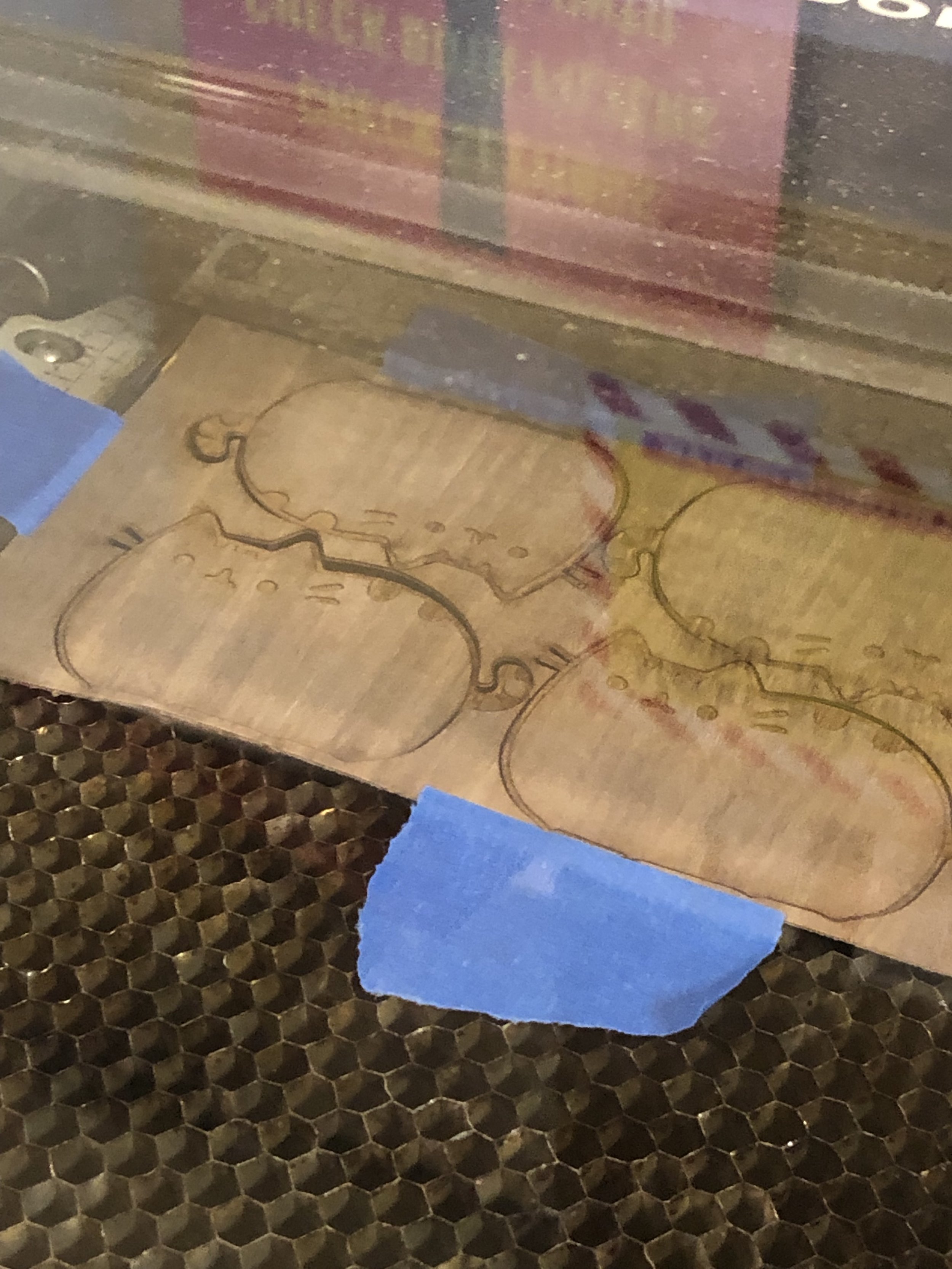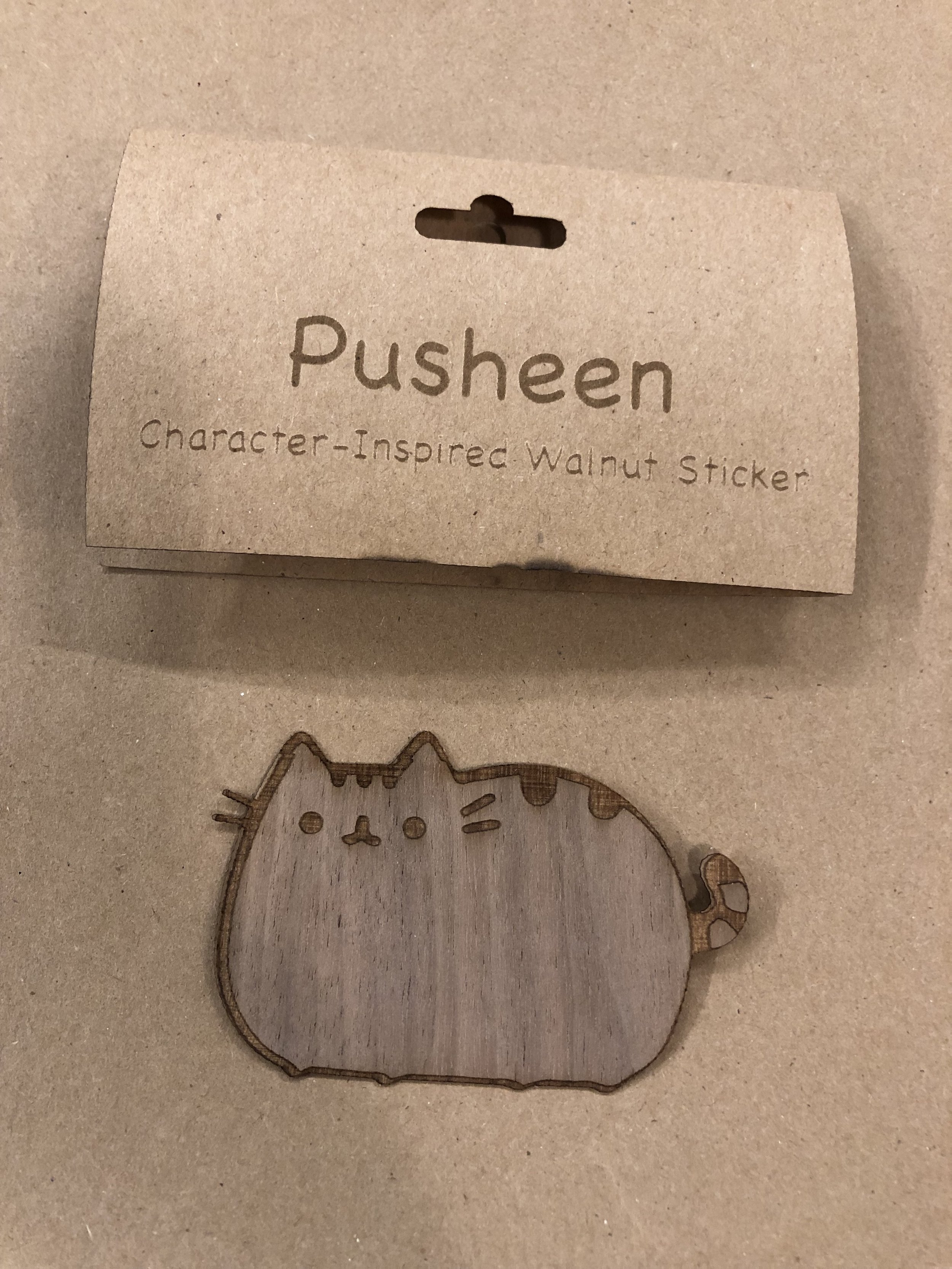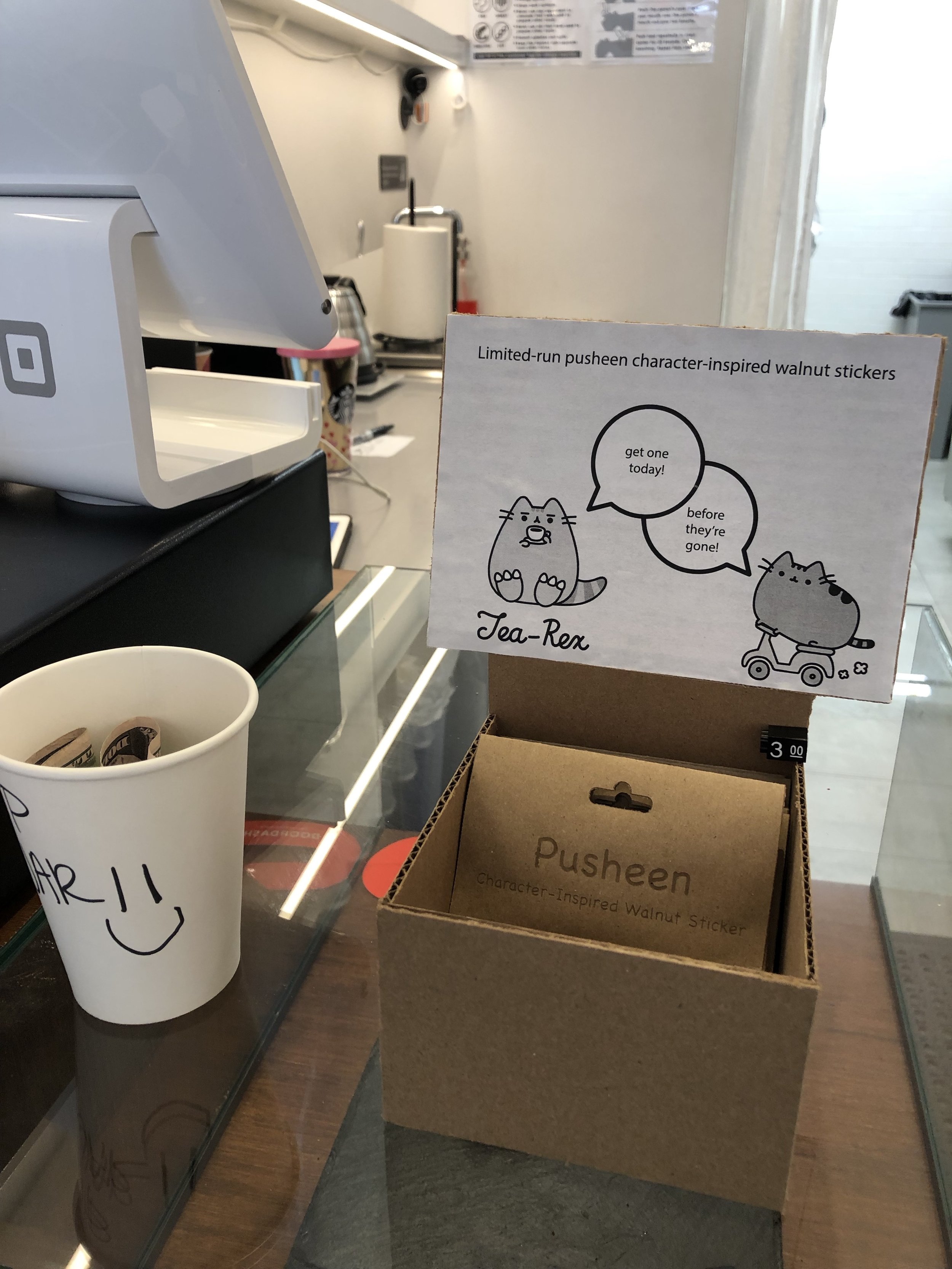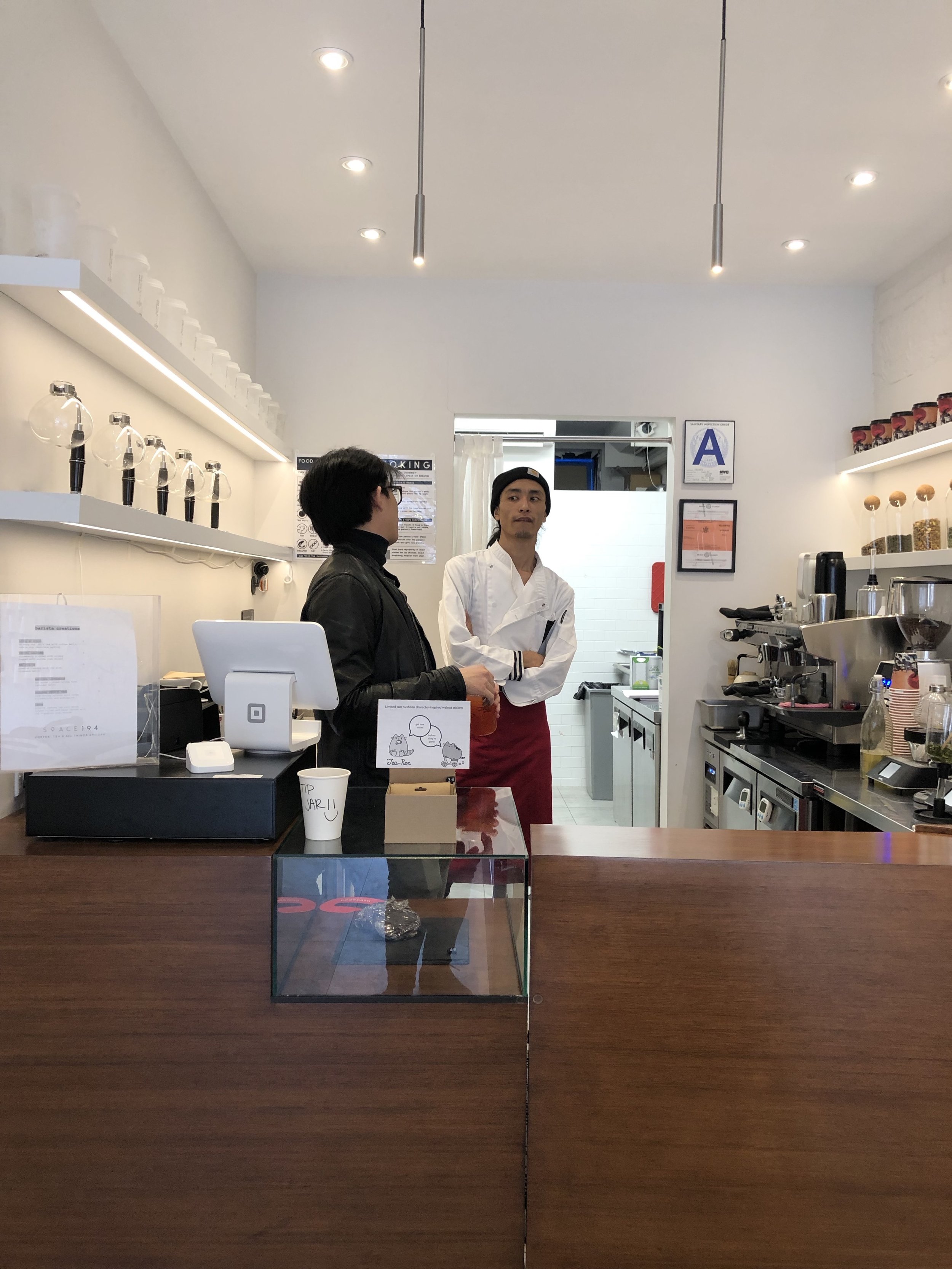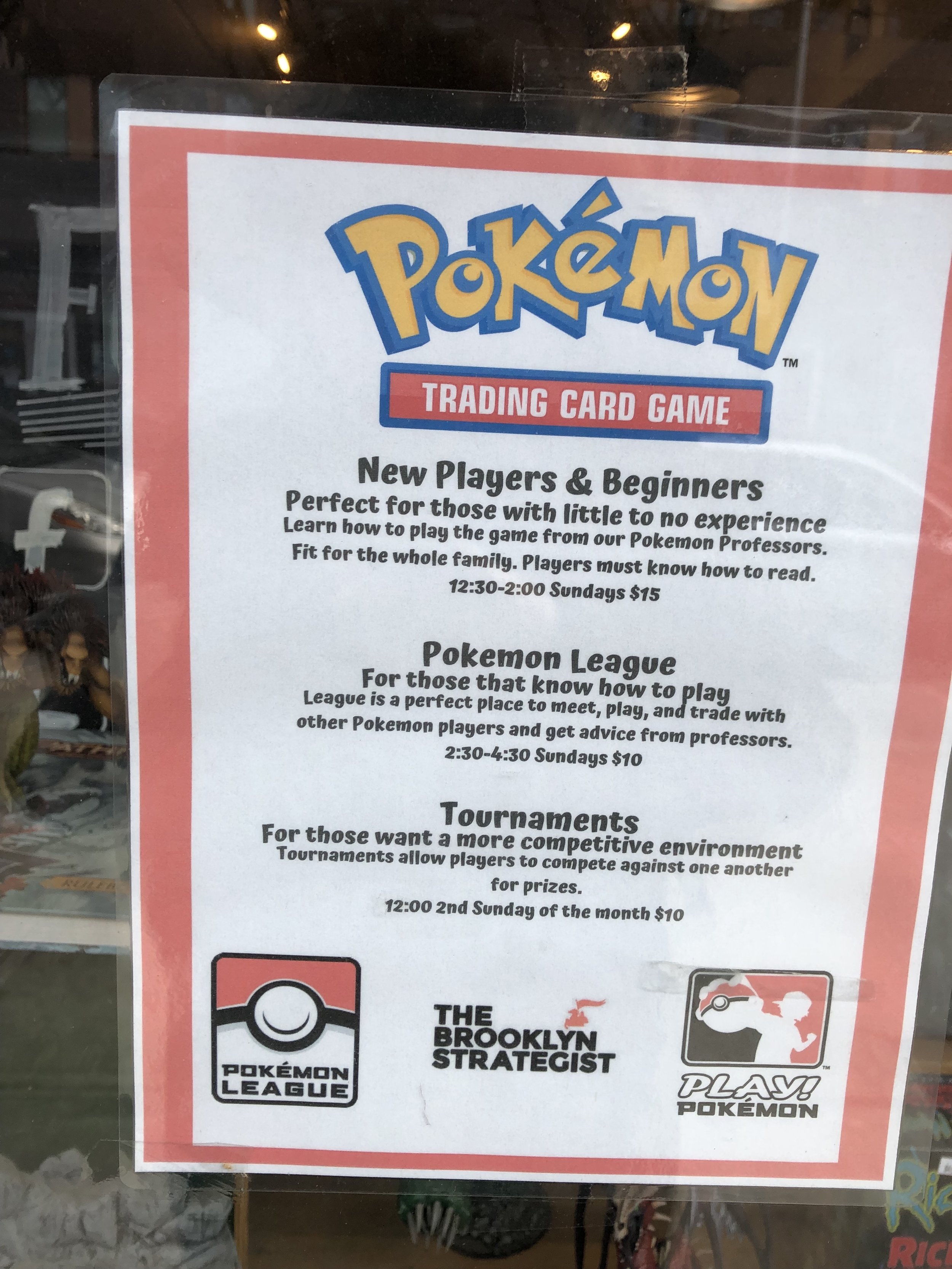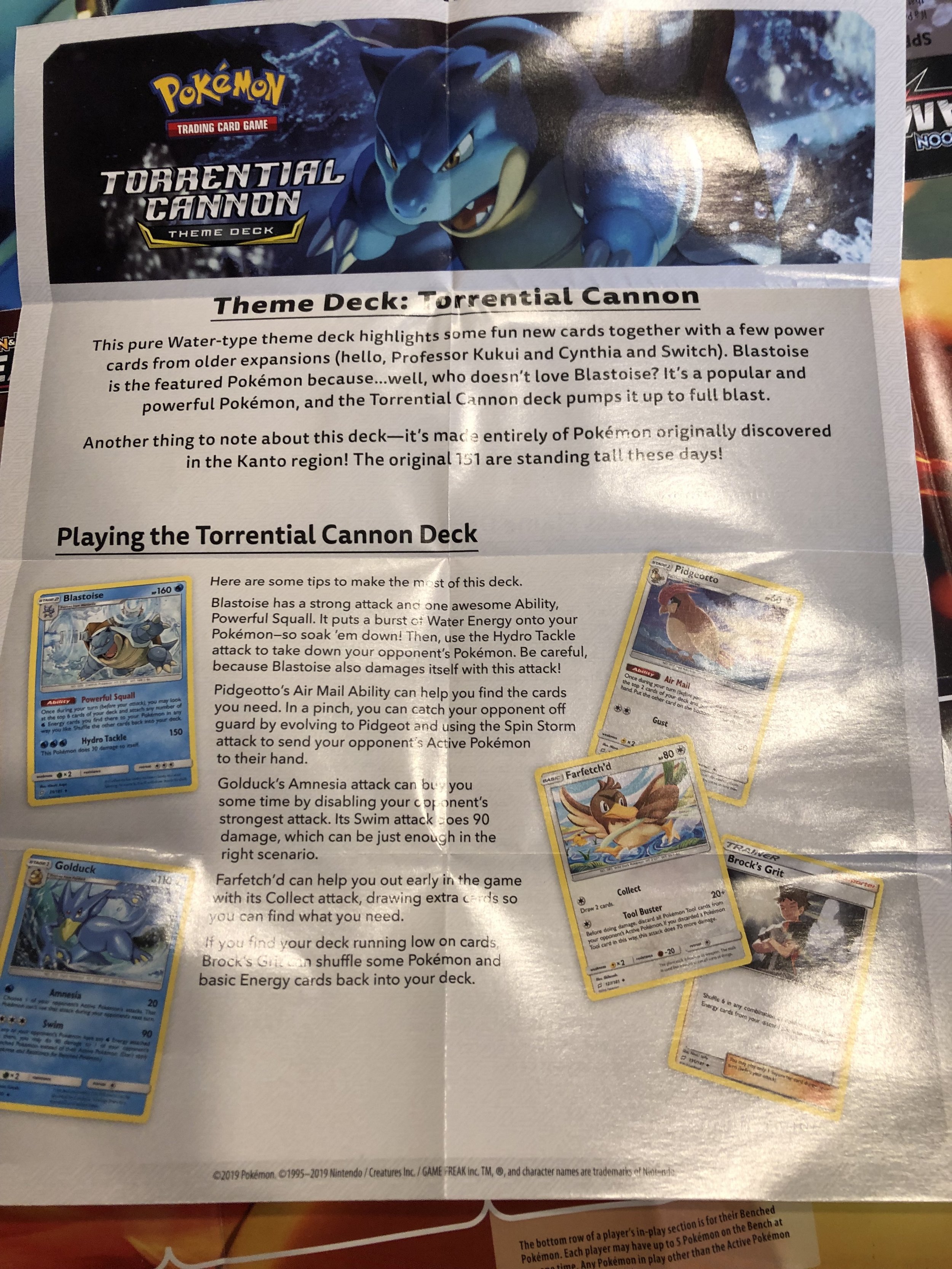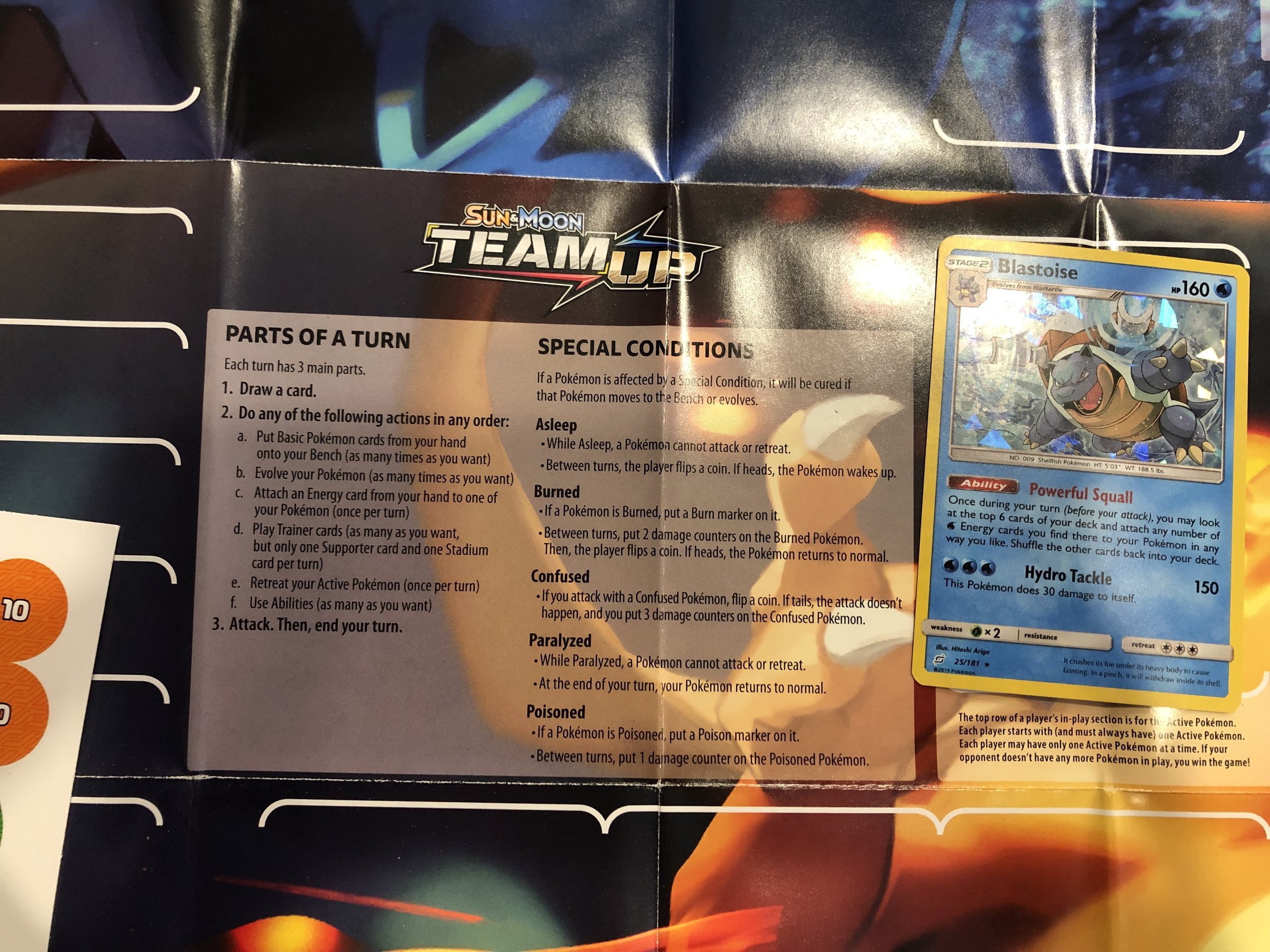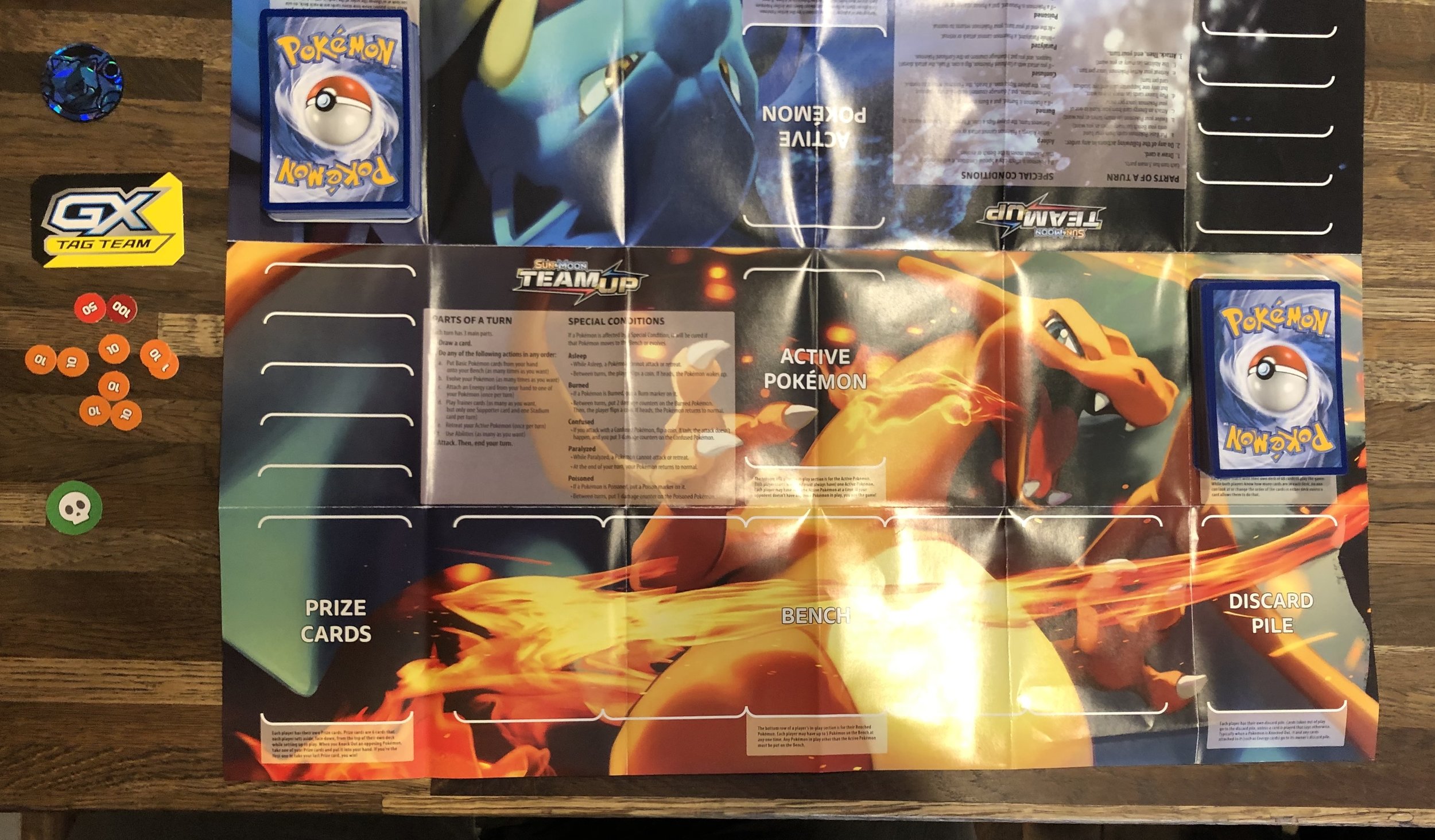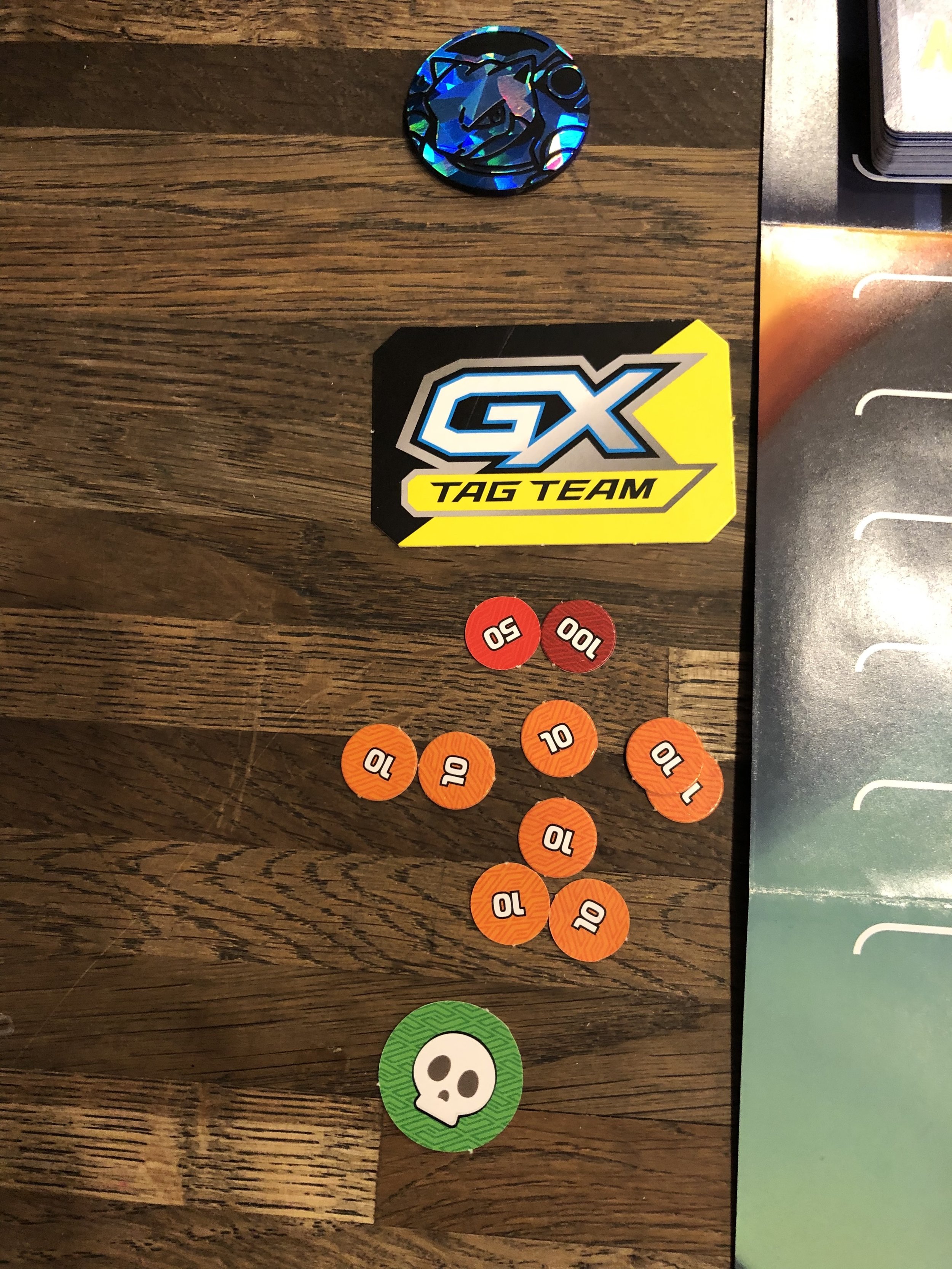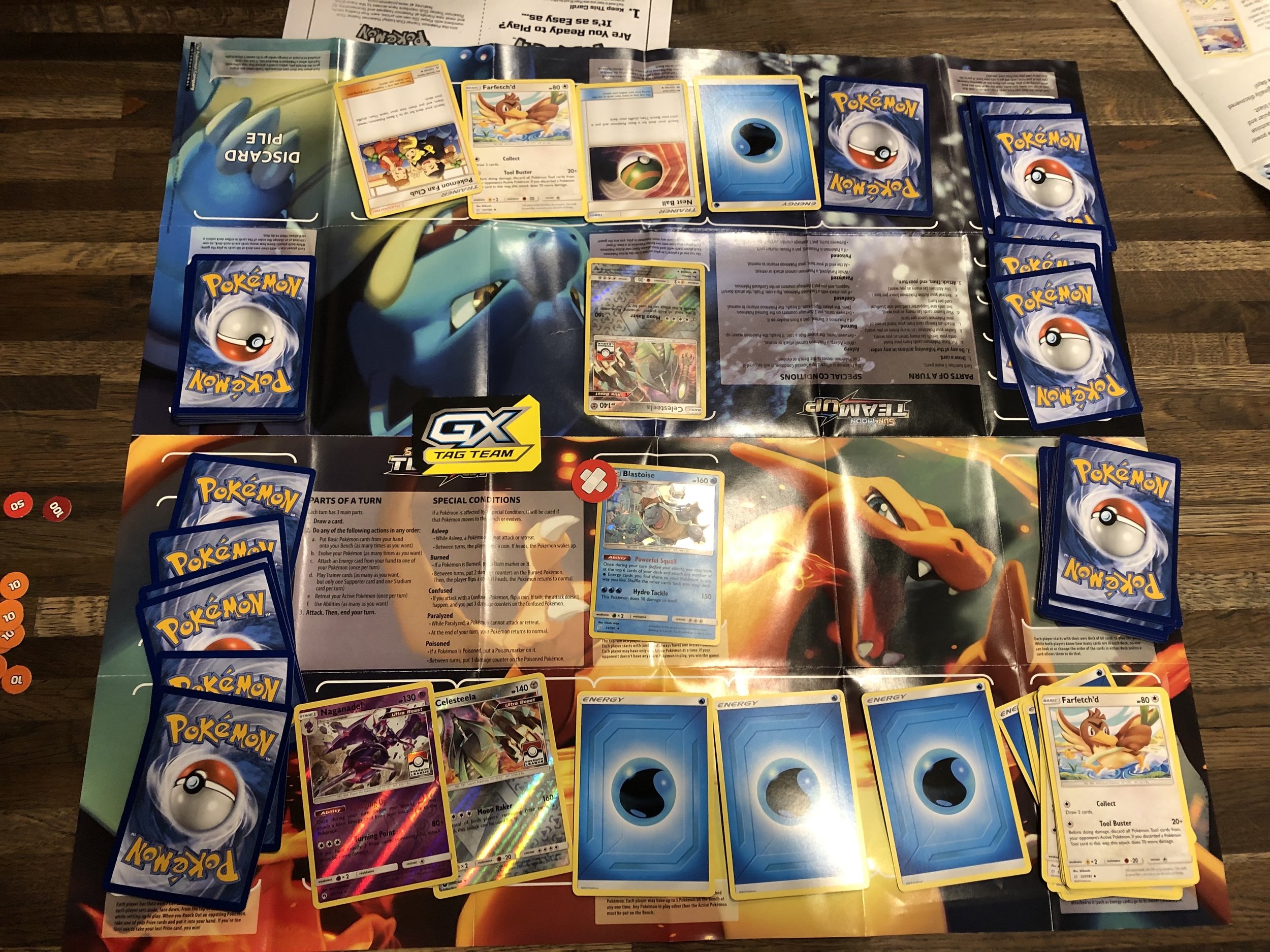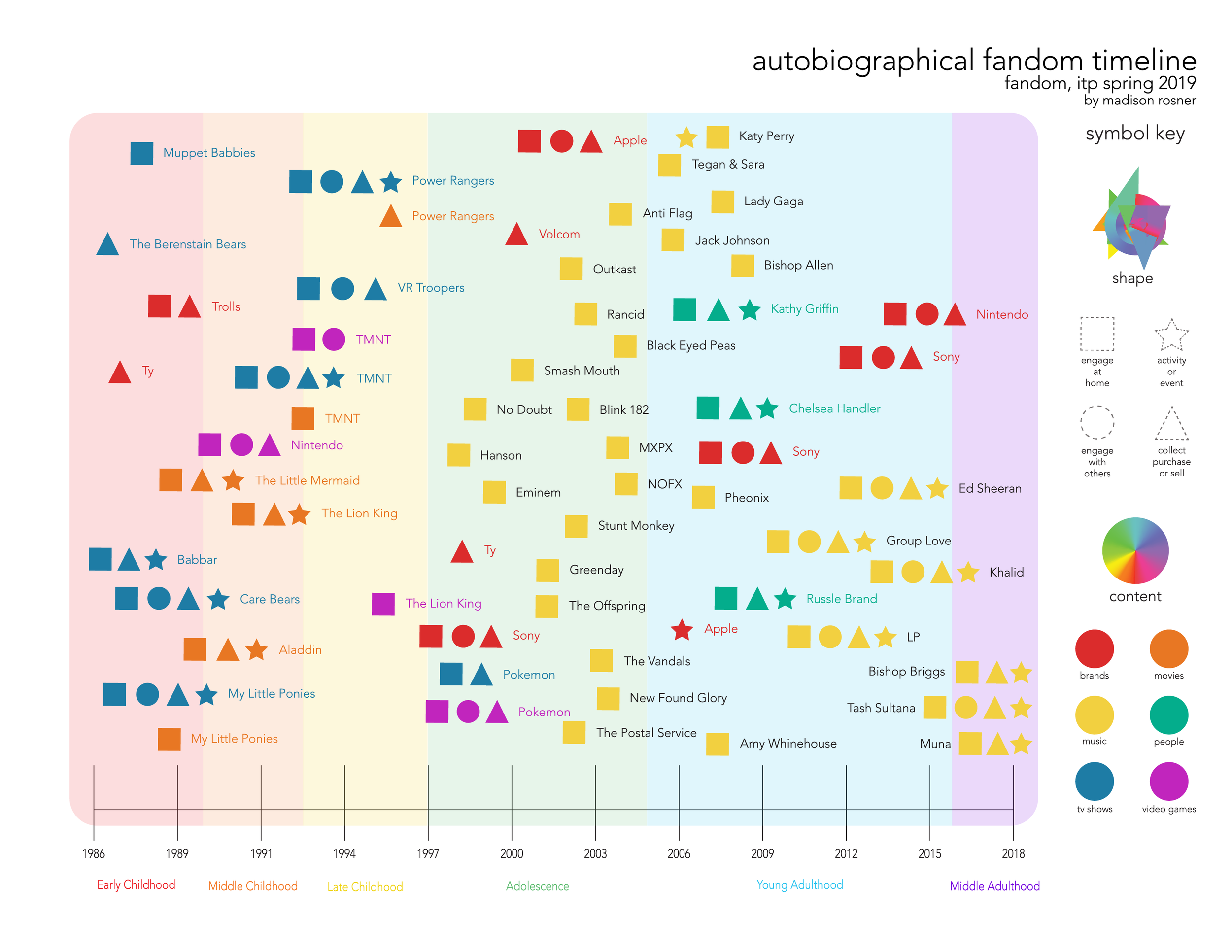Create a new presentation and edit with others at the same time. Get stuff done with or without an internet connection. Use Slides to edit PowerPoint files. Free from Google.
Week Ten | When Fandom Goes Wrong
This week’s reading and podcast focused on the negative sides of fandom and what can go wrong in very different situations.
In Consumer Tribes, Steven Brown documents the darker side of Harry Potter Fandom and the situational times where the Fandom has dictated the direction of the Harry Potter book and film enterprises. It’s interesting that a fan text that is so well known has such a rabid fanbase and the degree of violence is variant, yet present.
The author mentioned that marketing was not a focus in the beginning of the launch and that simple word of mount had the book’s popularity spread across the world fairly quickly. It is interesting that there was little to no marketing, considering the amount of marketing that has been pushed via Warner Brothers for the film enterprise. But with book deals and film rights, some things do need to adjust over time.
In the Harry Poterism the fandom has created countless fan fiction, parodies of languages, and fansites where the iTribes have taken over and at times have spread the word faster than a marketing agency could do. I especially like the AOL mystery of the chat room showing up in the early 2000s that may have made it a national epidemic due to FOMO primarily.
Even J.K. Rowling isn’t a fan of the widespread fandom and had troubles continuing the story after the widespread popularity and at times rabid demand from the Fandom itself. The expectations that fans have for the creators is a bit absurd, yet flattering if you look at it in several angles. It’s an amazing thing, the power that fans have over the success/failures of a particular fan object/ fan text.
In Radio Lab’s Straight Outta Chevy Chase, the hosts interview Peter Rosenberg of Hot 97, who defends his stance on ‘gate-keeping’ the rap/hip-hop fandom. The argument here is that culturally and racially, hip hop has been predominantly a black art form and a white man from the suburbs doesn’t have the credentials to determine what is and what is not ‘hip hop’.
Stigmas play a huge role here, where gender and race are apparently determining factors in Rosenberg’s comments about Nicki Minaj, who he live $hit talks (streaming and on stage) during a festival. This was at a time when ‘Starships’ was blowing up and he basically said she wasn’t real hip hop/rap. Nicki immediately cancels the show and the Twitter storm that followed made his career the ‘defender of the realness’.
Nicki created a deal that involved several artists and over the span of a few months, Rosenberg created outsider status in the fan community of rap/hip-hop by putting her down. The play of race and gender argument was incredibly insulting and revealing of another debate that was not being discussed. Real hip-hop is more masculine and aggressive, where pop is more feminine.
A year into the feud, Nicki Minaj decides to settle with Rosenberg, who apologizes yet Nicki pokes at Rosenberg’s resume and tells him that she finds him annoying and doesn’t believe he has the credentials to dis her the way she had and to determine what is true hip hop and that men have created blocks for her in her career and didn’t like the overall feel of the comments made by Rosenberg and that it just felt wrong.
An alternative argument that has some merit, yet very difficult to measure is having experience that qualifies the gatekeeper is in the heart and not necessarily the background/race/experience of the person. I think this is very true in our own expressions, but unsure how this could be produced in the world where feelings are hurt often. It is very true, however in our own ways of interpreting our worlds around us.
x.
Final Ideation
Week Nine | Being a Fan Object
This week in Fandom the readings centered around how Fans interpret brands and either create their own meaning as well as brands that have meaning that is created for audiences to follow.
In chapter of Buying In by Rob Walker, he discusses the ‘Pretty Good Problem’ where brands who have capital across the board are considered the most successful. With potent brands like Apple and Nike to name a few, the icon/logo is infamous — it has been used and parodies have been created over the years. Fandoms have existed for years and the fans span across a multitude of demographics, where fans have used the brands as part of their identity.
Personally, I have been a devoted Apple user for nearly 20 years. My connection to Apple Computers goes beyond my repeat purchases and scaled and increased usage over the years. It all began in High School, when the iPod came out — and quickly escalated to a few computers and iPods before joining the ranks of early Apple Retail Store employment in the mid-2000s. From there, I learned the computers and supporting products in-and-out and have owned almost every iPhone since the beginning. I currently use an Apple computer, iPad, and iPhone in my day-to-day routine. It’s an endless cycle, but couldn’t be happier as my experience with other computers and technologies just isn’t as bright.
We see this behavior in apparel and toys that are licensed to support the fan text or fan object. Band t-shirts are one of the largest grossing items that sell and support the music industry. It’s a way for fans to show and wear their favorite identifies on their bodies, showing the world who they like, which in turn allows for them to display their identity.
I found this method of expression most appealing in High School, where wearing branded merchandise (shirts, patches, stickers and buttons) from the bands I listened and identified with were part of my default outfit during my punk phase. I saw it as a way to find others that liked similar things — Myspace was really just getting the green light at the time, so this ‘old fashioned’ way of relating to the world was my ticket in with friends of similar tastes.
In From Smart Fan to Backyard Wrestler: Performance, Context, and Aesthetic Violence (WWF) written by McBride and Bird, the authors outline the idea of the difference of Smart Fans vs Mark Fans where Smart Fans are the Fans that despite the knowledge that Professional Wrestling is an acted-out event, they are 100% engaged with the degrees of facts and history of the sport, where Mark fans typically have no idea that the sport is ‘fake’ and simply go along with the storyline as if it were real — most typically children according to the authors.
The authors discuss how backyard wrestling — simply put reenactments to what the WWE on television, is to be held by normal people in their neighborhoods — grew to be a fandom of it’s own, where it extended to the internet and eventually extended into an active fandom where the ritual was replicated across the nation. This in turn was enabled by material culture of the fans — video cameras, trampolines, TV, and Internet services — and allowed participants to explore the limits of experiencing the sport beyond being a spectator.
This type of immersion in a Fandom can hold so much more meaning and sense of identity to it’s fans, as they are actively engaging and participating in matches that are either written based on existing or influenced by. Seemingly, this would engage the Smart fans of the sport more than the Mark fans — in turn, requiring smart status and knowledge to influence and produce worthwhile content most likely.
x.
Week Eight | Amanda Palmer
This week I watched Amanda Palmer’s Ted Talk titled ‘The Art of Asking’. I found the story told interesting and relatable. I had no idea that before The Dresden Dolls took off she was performing as a street artist and remember listening to her band during my 1st and 2nd years of undergrad (circa 2006-07). It’s been some time so absolutely a nice reminder of times long ago. Yet I cannot recall how I found them back then to begin with. I know I bought their album on iTunes (when that first launched for protected music) but can’t place timeframe/situation of how I became aquatinted with the sounds of The Dresden Dolls.
I found Amanda’s perspective of trust something very unfamiliar, yet something I aspire to feel — finding myself in odd predicaments throughout my life, it’s hard to imagine what she has chosen to experience while taking these experiments with the public. Sure, as she states not all people treat her well or say pleasant things. But the ones that due are why she does what she does. It’s in the moments of connection that she finds her value and true purpose for playing — the exchange of gratitude that her fans provide.
When it came down to numbers with her record label, they were not pleased with her numbers and chose to shame her/band for not being successful under their measures of their defined success, she found a way out of her contract and crowd sourced with the intention of providing her music for free yet asked for support to create her music. Even though about the same amount of people who bought her album (under the label) she still made about 50 times more in donations just for asking.
Her authenticity and trust in her fans as well as the learning that she’s experienced throughout her life has made her the motivating factor in others’ lives. She shares her truth, her art, and most importantly who she is with her fans, making that connection so much more deep and meaningful — even resulting in enough money to fund her life and career in the most colorful ways.
x.
Week Eight | My Attempt At Writing Fanfic
[Preface]
In an inexplicable worldwide event, forty-three extraordinary children were spontaneously born by women who'd previously shown no signs of pregnancy. Millionaire inventor Reginald Hargreeves adopted seven of the children; when asked why, his only explanation was, "To save the world."
[Timeframe: Present Day}
The Earth is nothing more than a molten rock with a thick layer of ash. How this happened, a chance beyond knowing — the moon encountered a beam so extreme in power that it penetrated past the surface and into the core, completely discombobulating the overall structure and composure. In an adverse reaction the moon broke to pieces and those pieces came down to Earth in the most menacing ferocity, annihilating all life forms entirely.
Suspended in time are one ghost and six humans, 6 of which are transforming from their adult shapes to their child forms; the fifth is already there. Who are these people, you may think? They are the 5 remaining members of The Umbrella Academy, time traveling back to a time before all of the bad things began to happen — to a place where at least they are all together as a family before the world was no more.
[Timeframe: Mid- 1990s]
The sky begins to weave and wobble; the Earth is shaking in all direction; the sky begins to part and seven young humans fall from the sky and into their backyard. Quite disheveled, they appear to look around checking their own continuity as well as their siblings around them. These kids are unlike any kids — they are special in the means of gifted with extraordinary talents. As they begin to remember who they are and where they came from (decades forward and decades back) they realized their mission for returning as this age — to prevent the apocalypse from happening.
Number 5, stands up and shakes off the dust and grumbles that he needs to work on his landings better. The rest of the group stares with angst in his direction and all sigh in sync showing their combined exhaustion and frustration within the moment. In a direct and gruff tone, Number 5 stammers that “It’s a complicated process alone just to move through time alone but to not only move through nearly 3 decades and also with the 5 — well 6 of you, it’s a miracle we all made it in one piece!” The rest of the team roll their eyes, begin to stand up and dust off from the fall on the ground. They take the next measures and walk into the house, greeted by no other than Mother with a tray of lemonade and cookies of course.
As the children enter the kitchen, a light kettle screams in the background. Mother asks, “Now how was your time outside today, children? Are you ready for your lessons, today?” Before the children can answer, Mr. Pogo, a talking chimpanzee, quietly says, “this way, children. Young Vanya you know where to go. Your Violin is in the study — please focus on your violin while the extraordinary ones practice their abilities”. In a fraction of a second, young Vanya (aka Number Seven) has Mr. Pogo suspended in air using her ability to translate sound into energy. Mr. Pogo, completely bewildered, demands “..to be let go and brought back down to the earth at once!”.
All attention is on young Vanya in this moment. She didn’t have a choice to be brought back to this time in decades past and had fainted in decades forward as the result of extending too much energy and being the cause of the world ending — and in this very moment she was at the same mental space as decades forward where she wanted to ruin all who either held her back, discouraged her greatness, or shamed her in any way. She had full control on her powers and was keen on proceeding with her mission to destroy anyone who stood in her was.
Young Allison (aka Number 3 aka Rumor) advances towards Vanya and proceeds to calm her down, reminding her that they love her and have travelled back in time in order to fix the past. Vanya softens and releases Mr. Pogo from her energetic holds, and then begins to break down. All of the pain and anguish of the past memories flood in and she begins to panic in her overwhelm, unsure of what is happening in that very moment. Mother approaches her and begins to attempt to console Vanya, bringing her to the present, having her look around at her environment that was consistent with older memories and also to her siblings who distinguishably look much different and younger than she remembers.
Some time passes and Young Vanya is able to discern that she’s not currently in the same timeframe as she last remembers and begins to ask questions surrounding her last memory of playing first chair violin in the orchestra and not really remembering much more. She proclaims that she feels disoriented and really confused to be in this younger body and feel so much different than memories of past timeframes — all is mis-sorted and the room becomes still.
At that very moment, Number 5 interjects in a very abrupt manner that she was responsible for the end of the world and that he brought all of the family back to this timeframe to prevent the future from happening and saving the world from ending. Vanya’s eyes widen and she looks even more overwhelmed than prior and begins to speak when the children’s father, Sir Reginald (aka Monocle) enters the room demanding to know what all of the commotion is about. Allison looks to Luther (aka Number 1 aka Moon boy) for direction as he has the closest relationship with the Monocle.
Everyone simmers their commentary as Luther begins to share with the Monocle what has happened in present time and past time and how Vanya has discovered her abilities even though she was told that she did not have anything extraordinary to provide the team when they were last young. It is now where all of the present and past information begin to make sense to Vanya as she begins to speak she only asks one question, pointed at the Monocle. “Why?”, she asks. “Why did you treat me as though I was ordinary when I am indeed extraordinary?”
Sir Reginald darted his eyes in her direction and simply stated, “this needed to happen in order for you to build your strength to the greatest ability. Knowing that Number 5 would be able to bring you all back with all of the information gained over the years, I was confident that you would return with a harness of your gifts and leverage them out of love verses the fear and pain you needed in order to build up the strength to unlock and build muscle around. I is a true gift to be able to see you in full strength and ready to take on the challenges that face us presently”.
With that, Vanya’s entire body and overall energy dropped and she appeared to melt. “All this time I thought I was a burden; a mundane figure that you just dealt with. It’s the reason I wrote the book to begin with — I felt so much on the outside of everything. I observed everyone from the outside and interpreted myself as an outsider when I wanted to belong so much. I felt so conflicted over the years, wanting to be close but not understanding the space around which I could be. It wasn’t in my conditioning to do so, so I found other way to fill my time and days.”
It was in that moment that Vanya felt belonging for the first time in her whole life — both decades forward and decades back. It felt like a new life; the world seemed different in some way and there was a subtle excitement that became present. That was also unfamiliar. Not just the feeling of excitement, but feelings. That was new due to the removal of medication for anxiety. Feeling was new and not so extreme at this point. What a wonderful opportunity, she thought. This is definitely going to be something else.
All 7 children followed Mr. Pogo into the training room and began to prepare for their next mission. Sir Reginald stood stoically with a glimpse of a simple smirk appearing on his face. His plan had worked out after all and he was feeling a bit excited to work towards his mission and save the world from ending.
THE END
Week Seven | Using commercial identity for fun and profit
This week in Fandom we were tasked with creating a commodity for profit for the time over Spring Break. I had purchased wood veneer from amazon a few weeks prior for another project and immediately though of creating Pusheen stickers out of the veneer via the laser cutter. I partnered with Lillian Ritchie and set out to get them produced as quickly as possible.
While I got the laser cutter formatted, Lilian made the labels (sourcing the closest font to what the Pusheen team uses and created a header label for us to package the stickers in. I also went to the party store down the street and procured plastic party bags to house the sticker in. I used the craft paper in the shop and quickly put together 15 packaged stickers to sell. I did a quick equation and noted that I had only used about $4 worth of wood and spent about $2.50 on the bags. So Initial upfront cost of about $7.
Initially, I was going to take them down to a few consignment streetwear shops I have been frequenting in soho and then remembered that my friend Jacky Chen had a tea shop called Space 194 near school and I thought that this would totally fit his demographic so asked if I could place in his shop and if his team could sell on my behalf. I halfway expected for them to take some sort of cut, but they didn’t. We priced the stickers at $3, and sold a total of 4, equalling $12 in gross profit. There was one lifted. I had given all staff a sticker (3 in total) and still walked away with a $5 net profit after sales and give-a-ways.
Our reading this week — Star Trek Reruns - Reread, Rewritten: Fan Writing as Textual Poaching by Henry Jenkins takes us into the realm of fan fiction derived from fan text that tends to follow a rebellious nature — at leas in the fan’s eyes towards their wants and desires, sometimes even making money off of the fan object.
The author introduces the concept of poaching where fans take the intellectual identity of the fan object and create something entirely outside of the direction of the fan text. In this context the fans (identified mostly as women in this context) are taking the story line of the fan text and altering it to suit their own needs and desires — either simply put a way to process simple happenings in their lives or even overtly conceptual desires or fantasies that they want to see in the characters that they have gotten to know so well.
I think there’s a discrepancy in the ratio of men to women who participate in these types of work to be honest. I spoke with a male friend who writes fan fiction under a woman’s name. From what he shared the community is very populated with the same like-minded ideas. I see this as something that potentially is misunderstood across the academic world and a limitation of the research performed.
The exceptionalism and wish fulfillment that is contrived in the production of fan-fiction — especially the ‘mary-sues’ that the author refers to — are totally far fetched and seem to stretch the storyline beyond the intention and the assumptions of the creators. I can’t really relate to the desires to create fan fiction, unfortunately. I don’t see the point of spending the time to create and extend or change a storyline made by someone else — regardless of connection to the show, book, or film. I suppose I’m a purist, and appreciate the time and direction that goes into original content creation in general. But until next week, I can honestly say I would have never written nor considered contributing to fan fiction in my life.
x.
Appropriation
in the wild
Week Six | Commoditized Rebellion
This week in Fandom, we discussed how companies commercialize and profit from Fandom. In the above image, I went around to trendy stores and found clear examples of cultural appropriation for profit. There is a big movement in retro chic and the things I loved as a kid are apparently cool again. It’s mind boggling yet understandable that this happened in the 1990s with things from the 1970s.
The assigned reading for the week covered what happens when a large conglomerate (Twentieth Century Fox) auctioned props from Buffy the Vampire Slayer on eBay when the series wrapped in 2003 — the auction and the concomitant online reception occasioned a unique and enlightening collision of fandom, consumption and internet culture; allowing anyone to purchase clothes and props from the show, allowing anyone to dress and act like any character they preferred.
I vaguely remember hearing something about this when I was in high school — maybe in the LA Times. I was a youth of the WB (now CW) that was the home of Buffy and several other shows. These were the first of their kind for enlisting an exceptionalism concept on a public television channel. This along with other shows and spinoffs were core of my elementary and middle school conversations when I was younger, as well as a key indicator of what to ask my parents to purchase for me as well, thanks to brilliantly designed product placement) . I know my fashion sense in elementary school was limited, but by middle school and high school my friends and I were all influenced by television shows such as Buffy for what outfits to wear as well as other commodities to own.
Buffy was a television story that integrated the new fun technologies that we were being introduced to within a hour of story depicting a heroin defeating demons. Intact in this were great interwoven storylines sharing how unsafe the internet truly was. I suppose that could have influenced how I interpret the various exchanges at our fingertips on the web. Needless to say, Buffy and other shows of its era were definitely part of the weekly routines of catching up on the latest and greatest that we were able to integrate into our every day, consumer-driven lives.
I wouldn’t necessarily call myself a fan perse — I honestly barely remember watching the show. However, I do understand the concept of wanting something special; something limited; something that I can only get from one place; and then be able to brag to others about it. I think somewhere I may have a script of the show, maybe from a silent auction from my elementary school or middle school that my mother won. That and other perks of growing up and going to school in Los Angeles, I suppose I had an unfair advantage to receiving these fan texts.
In other cases, my uncle bought a Shaq sneaker — just one shoe and placed it with it’s certificate of authentication in the foyer of his house under a glass box. There’s a sense of pride, of adoration, and economic capital that comes with purchasing items that are limited, expensive, and worn by their favorite fan objects. If I remember correctly, this was won on a public auction on QVC or something of similar nature.
In the article, it’s interesting to see the various degrees of reasoning for why someone would purchase the props as well as the frustrations attached towards the studios for putting the items up for auction in such an enlisted forum. This was for the public audience to purchase private one-of-a-kind items through a public action with private exchange. It’s pretty clear the intention and was advertised as such, but there were still some upset fans who wanted to take a stand against the studio and their motivations to commoditize their fan objects.
For varying reasons of why someone would want to purchase this memorabilia, the argument on whether it separated this from true fans is a remarkable attempt to challenge the motivations of this auction. Role playing, cos play, and other types of fantasy role playing are by far a great reasons in the sense of actually using these props. In a legal disclaimer, Fox even warned that: "[Items] are not to be used for their seemingly functional purposes and are only intended to be sold as collector's items. DO NOT use the items purchased through this Auction for any functional use." However, I find that there would be more value in keeping them in a safe place, knowing that one would own a piece of the show, not necessarily devaluing the item purchased with additional wears and tears. But who knows. People are people and they will do what they wish, given their conditioned contextual views.
Even prior to the show some fans had been challenged by Fox’s legal teams to take down various fan sites. There’s this place that Buffy Fans (and this goes beyond Buffy Fans) — basically all Fans create what they want within the context of the Fan Object and what they envision onwards through the eye of their identity. Fans will interpret and extend storylines to suite their own fantasies and desires in their own Fan Contexts; it’s inevitable. This story and others like it are interesting in that the momentum of upset fans can really change the direction of a story entirely. It’s a powerful movement that challenges the business leaders that are making the most money out of the Fan Objects to begin with.
x.
Week Five | Fangroup Motivations...Part 2
This week in Fandom, we discussed Fan Motivations and read chapter 2 of Buying In by Rob Walker. The author depicts Fandom through the DesireCode as both an escape from conformity as well as joining-in to find belonging in a community when and where there is no belonging elsewhere. Deep down, each of us is different, unique, and special. We are also all just the same. We all want to feel like individuals. We all want to feel like part of something bigger than our selves. Resolving that tension is what the Desire Code is all about.
The Desire Code presents a Fan Identity paradox where people are under more pressure than ever before to find identity themselves, when historically societal class structures and family backgrounds dictated who someone was and what they were able/capable of doing. In youth culture today, they are trying to find a role in society and find a way to live authentically to who they are and what they enjoy doing. Kids are adaptable and have the flexibility to try new things and reinvent themselves until they find what works for them. In a way. they have a bit of identity leisure in that they are able and capable of doing things that were not available to their families in past generations.
The author interviewed, Ed Templeton, a professional skateboarder and owner of Toy Machine (a popular brand of skateboards) and exposed a very interesting fact that there was an “outlaw aspect” to riding skateboards in the 1980s, and that a lot of kids who were into skateboarding were from broken homes. His skateboard mates were “outcast kids” and skateboarding was illegal in many public spaces of Templeton’s home town in Orange County, CA. In a place where these kids did not have stability at home, they were in turn able to create that safety within their community and skateboarding culture.
In these communities, mainstream or not — many skater kids would either get sponsored by brands to advertise their level of belonging/status/clout, or create their own fandoms within their individual groups. They would introduce their own commodities (stickers and graphics) and create underground zines as well. Within these outlawed groups, Templeton and others were able to form an identity and become an individual when outcast was all that was known before.
When I was in middle school (late 90s/early 00s), skateboarding was definitely carried a different meaning — especially if you were sponsored. I went to a middle school in a predominately white neighborhood that was on the upper middle class side of the city, where kids who skated ‘professionally’ had the best reputations. Completely opposite of what the author states here. I was a novice at best and wore the shirts, had the gear, and sold merch I collected at various competitions/expos. I was a poser and merchant simultaneously, yet I belonged. It was an identity that I had until I joined and begun my hockey career — also very similar in nature.
Adversely, Walker discusses the Red Hat Society and how they are counter-cultural in nature. They grew quickly and are known for wearing bright costumes, having exuberant group behaviors, and are typically all over the 50 year age marker. The subculture motive is to challenge the way that society expects older women to behave — they are rebelling by conforming to a new group that is highly individualistic and multicultural. Their exotic nature of wearing purple dresses and red hats grew to a network 0f 850,000 members worldwide, and a retail shop where hundreds of varieties of hats and dresses were sold as well as other commodity elements and items.
What’s so interesting is that even the most mundane items (like pens, buttons, stickers, etc) can be subverted and take on even more symbolic dimension. In skateboarding and even in custom Red Hat items, both classifications of groups have immense buying power. There is an unexpected consequence of advertising where individualization and commodity have an un-measurable amount of buying power. Marketing and advertising both fuel these groups in their claiming of cultural capital.
x.
Week Four | Fangroup Formation and Group Motivations
This week, Lillian Ritchie and I explored the Brony fandom community — in essence, we both remembered hearing negative press 5 or 6 years ago and wanted to see what we could find. As it turns out, Hasbro (or their legal representation) has done a pretty decent job of clearing out the negative posts and has created a public-facing company that is pretty ‘clean’ and ‘happy’ and mostly brand-centric, promoting rainbows, unicorns, sunshine, and smiles all around.
What’s most interesting here is that a fandom that was once a fairly middle-aged male dominated culture, has not much changed other than what is and what is not allowed to be shared. It’s a very self-policing environment that appears to thrive off of the accolades and ‘hoffs’ that members give one another. It appears to be a polite and supportive culture where members can ‘freely’ post within the rule-sets that are dictated on the site.
x.
Week Three | Fan Mentality
This week in Fandom, we discussed Fan Mentality and how Fan Groups and the subcultures within develop and maintain structure through social and cultural norms formed within the group. Fandom cannot exist in solitude — by design, it is a social activity that must include the interaction with others. These Fan Groups form because of a shared love for the same Fan Object and the basic human need to feel belonging within social context. To bridge these ideas, we read chapters 10 & 11 in the scholarly book, Consumer Tribes.
In chapter 10, titled Temperance and religiosity in a non-marginal, non-stigmatized brand community, Hope Jensen Schau and Albert M. Muniz Jr explain how brand communities, such as Star Trek and Tom Petty have strong followings, yet have very different levels of stigmatization surrounding the brands as well as the fans of these Fan Objects. The goal of this chapter was to identify why fan communities have developed and have also been the strongest among heavily marginalized communities. To express this idea, the authors describe how fans of Tom Petty (TP) as well as Tom Petty & The Heart Breakers (TPATH for short) have built and maintained a community of a non-stigmatized Fan Object and how the community comes together in order to keep the fan base on-brand.
Although Tom Petty is considered a rockstar, TPATH fans are not held socially outside of their Fandom Groups as anything but ordinary. TP fans will congregate at concert venues, private residences, and in chat rooms/online forums to pay homage and share experiences and expertise within a shared group of aficionados. The authors interviewed fans with varying timeframes in their length as a fan and the results show that TPATH fans are very welcoming to one another, all sharing a common love for Tom Petty and the individual connection fans feels towards him. Each fan documented in this chapter shares their rituals, traditions, and moral obligations that bring fans of TP and TPATH together, proving that the TPATH community is strong and holds a moral obligation to keep faithful fans in cohesion.
In the TPATH fan community there are cultural norms and rules that must be followed when engaging with other fans — in this, we see that there is a policing of sorts over inappropriate behaviors that are deemed against the interpretation (or assumption) of Tom Petty’s personal values, which hold God, family, friends, environment, and America in his highest regard. Online, fans monitor and police other fan postings on the official message boards — they determine what content is appropriate or requires age restrictions. If fans post something that references overtly sexual desires or drug usage (outside of alcohol or marijuana) , the more established members of the community will chastise the poster and in turn potentially ban them from the site. Fans will also unite and defend other fans in the case of being rumored to have been involved with activities that do not align with the image of TP that is held by the fan community.
Fans of TP and TPATH relate to the music and stories linking them intimately with their own personal life narratives. What I find most interesting is the religiosity of the TPATH Fan Groups and how spiritually supernatural they can be — in the instance of a guy healing his injured knee after seeing TP perform with also a rumored injured knee and feeling absolutely fine the next day we can see that miraculous things happen within these fans’ lives and create a more connected and romanticized relationship with their fan object. The power of will is also apparent here — but what I find so appealing with this is that these stories and meanings that fans give to these experiences are far more valuable than the experiences themselves. There’s so much here that is potentially ritualistic in nature, that sharing these experiences with others can bring even more validity to an event.
Tom Petty is pretty removed from his fan base and his fan base is not really much of the groupie type — they tend to engage more with the idea of connecting to the music and not the artist. This is fairly strange for a rockstar as they typically (or historically) have more of a symbiotic relationship with their fans. When reading chapter 11, titled Imprinting, incubation, and intensification: factors contributing to fan club formation and continuance, Paul Henry and Marylouise Caldwell depict that fans of Cliff Richard are more of the groupie type — supporting the stigma around Cliff that he is indeed a sex symbol and holds a layer of escapism. There lies a more interesting experience around celebrity worship and how Cliff Richard needs his fans in order to survive. It is a symbiotic relationship at its best and is a necessary interaction for both fans and Cliff himself. The authors state that “when a celebrity’s need for adoration fuels celebrity worship, the celebrity-fan relationship takes on a symbiotic character; fans and celebrity develop a dependency on each other. Each party becomes ‘willing prisoners’ of their expectations of each other”.
In this type of celebrity worship, what tends to show up are para-social relationships where person
A has a fully developed relationship with person B, but person B has no idea that this is going on and in most cases does not know person A at all. Especially a dynamic where a rockstar who holds a superficial allure, these types of relationships develop. It’s so interesting to think that based on the media people ingest, they are at risk of potentially developing this kind of attachment. When the relationship dissolves or if person A meets person B, and the feelings are exposed as being in person A’s own head, it can be devastating and heartbreaking to the individual who has created this idea of connection.
The celebrity or fan object can be such a huge part of their life that there can be a lack of understanding of differentiating knowing and not knowing them personally, in some cases. For example a kid of a fan ran up to Cliff Richard and hugged him in a public setting, never meeting him before. Because Cliff was a ‘friendly’ face in the home, the child unknowingly placed this connection upon him when first meeting. It is this and other types of para social relationships that are developed simply based on human’s need to connect and belong with one another over a shared space.
In some cases not being able to interact with other fans is an extremely lonely experience and takes away from the value in fandom all together. Fans describe meeting other fans as exhilarating and great to share commonalities with like minds over their love for Cliff Richard. Fan clubs are the goal and when found, they create so much relief in the fan in the desire to connect within a fan group. Feeling accepted is the most ideal aspect of joining a group and diehard fans are in it for the long haul. In some cases, fan clubs can be almost a surrogate family for many members of the group and that several members who developed personal relationships often become the most important of their lives.
The need for belonging and connection is one of the strongest desires that humans have — we can create these chemical releases that evoke the feeling of bonding and belonging even when it doesn’t fully exit; but also thrive and hold a more important value on the experiences we have when we do feel belonging. Being a member of a fan group, where all parties share one common adoration towards a fan object can hold the most important value within some people’s lives. Even so much as to replace their family bond entirely.
x.
Week Two | Class Struggle and Stigma in Fandom/ Fandom as Personal Identity
This week, we discussed the idea of Fandom as a way of claiming personal identity as well as the class systems and stigmas that are found within the subcultures of Fandom. To corner-in these topics, we read Shooter Boys and At-Risk Girls (Molly Crabapple) and The Logic of Stupid Poor People (Dr. Tresse McMillan Cottom) that identify and express some unique perspectives on how these movements can affect those who belong to these specific fandoms and those that are on the outside.
In Molly Crabapple’s article, Shooter Boys and At-Risk Girls, she breaks down the concept of childhood and adolescence being a rough time for a good portion of youth regardless of the idealism placed upon being a child in society today — she explains that even in her own youth in coming into adulthood, she found solace and peace within herself by rebelling from societal norms and finding her way within books, grunge, drawings, poetry, and being labeled ‘anti-social’ by most. Friends were not easy to make and relating to what was considered ‘normal’ by society was just not going to happen for her. Belonging was tough, and was found within her Fandoms — Fandoms which today are labeled icons for those who could easily participate in school shooting due to historical occurrences are isolating those that feel isolated and making the children feel even more isolated by deeming their interests threatening.
As a society, we have relied on and leveraged stereotypes to create the illusion that we know how to solve problems. Because some kids in Columbine wore trench coats, trench coats are immediately considered the icon and identifier to a potential risk to the system. This and other coping behaviors of the difficulties of fitting in to generic social norms — including drawings, poetry, art, and pretty much any way of expressing ones’ emotions outside of what society has in mind of being a well-behaved child — creates an uneasy feeling for the ‘authorities’ of education systems that want to keep the illusion that their environment is indeed safe, kind, and free of trouble. This illusion is also a utopian idealistic way of viewing the world — because, unfortunately we are never fully safe. There is no way to really know what is going through someone’s mind, and how the feeling of isolation can turn into other emotions and eventually shift into a dangerous situation.
It’s unfortunate, yes. The largest issue here is that those in authoritarian positions are trying to solve the problem at a micro-scale, identifying what others and myself think is the incorrect issues. Instead of let’s say, looking at the source of the issues — why would kids be acquiring weapons and making the decision to use them in the first place — they look at how to try to identify and solve via creating and following stereotypes crafted by the media and society. A really great way of prevention, which has been incorporated by The Center Nonviolent Communication and waldorf-based preschools and elementary schools, has been to incorporate the education of emotions & feelings and how to express them as oppose to suppress them, which is what main stream society wants us to do.
Showing emotions or expressing feelings that are not considered happy or joy are immediately rejected by what’s been ingrained into our social structures and class systems. We must appear ‘fine and good’ in order to be good citizens. It’s honestly getting old, and the world would just be so much safer if we adjusted this antiquated expression and rejoiced by creating space for ourselves and others to feel safety in the place of sharing the pains of being a human being.
In contrast, within social class systems, Dr. Tesse McMillan Cottom articulates the reasons why displaying the icon that holds value or stigmatism can create signals that one can fit in to a social class that they may not necessarily fit in with. In The Logic of Stupid Poor People, Dr. Tesse McMillan Cottom articulates that an item that would be considered as luxury by one class can be used by another class as a tool to fit in, prove belonging, or to fit in to a system that they may not typically belong with. A handbag that costs $2000 or more could be a necessity to some — showing that they understand and have the ‘uniform’ that creates this illusion.
The idea of faking it until you make it is pretty spot on in this commentary — in society, if we have the correct attire for a specific event then we belong at that event and will most likely be able to continue going to events of similar class status. We become the class that we resemble to the outside world. Even if you don’t truly belong, you can appear to have higher status, wealth, culture, and taste that will make you stand out from lower classes in society. It’s almost subversive in a way; baked into our ways and societal norms like the convection ovens of our social systems have provided us understanding. As we develop and create our communities of friends and the alike, we find that if someone doesn’t quite belong in the class structures that we have been conditioned in, then we can either work to bring them up to speed or leave them behind. It’s unfortunate and 100% unfair. But it where we’ve landed in society at this time.
In my previous work experience, it was very clear that if you didn’t fit into the culture that was formed then you had no reason to work with that particular company. This wasn’t everywhere that I’ve worked, but I will say that fitting into company culture was so important to most. Even at the hiring process, I had discussions with recruiters and team leaders who would create systems in order to hire primarily ivy-league educated graduates and by no means would they ever consider someone who didn’t graduate college. Somewhere in this designed system, we culturally have failed to look at the person and their experiences as a whole and have created these systematic norms that isolate and prevent people of particular social and class structures from joining their environments.
Personally, I’ve always done my research; worn the ‘uniform’ of choice, and designed my presentation to align with company culture. I’ve had great success here — however, my particular background, ethnicity, and pre-assumptions and biases made by the hiring managers, has supported my career and direction thus far. It’s everywhere, unavoidable, and potentially the only way we will live in this world until our last days. There are other options — but they involve removing oneself from the ‘matrix’ of society. Not a popular option, but can be wholesome and full of joy to some, mostly. But then again, this is also a utopian society, where inner rule structures exist and limitations are inevitable. For myself, I’m finding my balance between these two polar opposite ways, really taking into account honoring who I am, my needs, and overall goals.
x.
Week Two | Unfamiliar Fandom Experience
This week we were asked to form a group within class and perform a Fanlike activity that no one in the group is already overly familiar with. Lillian Ritchie and I teamed up and decided to join a Play! Pokemon Tournament at The Brooklyn Strategist this past weekend.
When I was younger, I could easily be considered a fan of Pokemon based on my involvement with the video games and selling of Pokemon cards. Despite the amount of cards I bought and resold, I didn’t find myself playing the game too often — I was too busy with sports at the time, and found that I didn’t really enjoy the game — most likely due to the amount of rules that I needed to memorize and that didn’t quite work with my competitive nature. My collection of cards is nowhere to be found; my parents may have thrown them away but somehow kept my collection of POGs — go figure.
I walked into The Brooklyn Strategist on Sunday afternoon around 2:30pm and quickly was amazed with the crowd and fluctuation of people incoming and outgoing and traffic within the store. I arrived a few minutes before Lillian and acquainted myself with the shop — they had a variety of board games, card games, and strategy games for sale that were all fairly foreign to me. A ‘Beginners’ Pokemon Lesson Session had just ended and there was a frenzy of purchases happening in the shop post lesson. Lillian arrived and we both signed up for the experience — $10 for entry and another $15 for a deck to play with. Since neither Lillian nor I were avid players, we split the cost of the deck and decided to share the experience.
Advertisement outside of The Brooklyn Strategist
We were immediately escorted to the ‘official’ table to sign up for our player card and become official members of the Play! Pokemon League. They took our birthday and email information and provided us a ‘temporary’ card that we then later registered on the Play! Pokemon site. Prior to sitting down, we were handed 3 special edition cards for joining the league. They give these only after playing a specified amount of games (I can’t recall but want to say six as it felt like an arbitrary number) and another special edition card for playing with this licensed Pokemon Tournament Establishment. The cards were special editions with a foil backing — in the ‘old days’ circa 1999/2000 these would have been the cards I traded or sold for good money — not the $2 or $3 a card trade; but typically a card like that depending on rareness would go for $25 - $100. I highly doubt that now, but wanted to note my thought in the moment of receiving something that was totally righteous back in my day.
Post receiving our membership id, cards, and a breakdown of the rules we were pointed in the direction of the player tables — there were two of them, filled to the brim with very eager and competitive 6 year olds. I can only speak for myself on this one, but that was incredibly overwhelming and intimidating — the other side of the coin was we didn’t want to join the kids and make them nervous (or more so their parents nervous). We took a cue and found an open table on the other side of the shop (the layout is a bit wonky, but they have a hallway in the back that leads to another storefront where there’s about 10 picnic-style tables hugging both walls and a strategy layout platform in the front). We found ourselves at the table in the front, near the strategy platform.
The deck we purchased included everything we needed to begin - game deck, a player mat, some action pieces and a coin to flip (which resembled a slammer from POGs quite a bit). The rules were lengthy and difficult to follow (instructions were on the reverse of the player board — because of our eagerness to engage within the game, we didn’t quite see the instructions right away. However, there were simplified instructions on the front of the player mat that helped…kinda. We attempted to play but quickly got distracted with our environment and I know I got overwhelmed with all of the rules.. I have this thing with board games where the rules get to me every time. Needless to say, I think we experienced a true fandom experience and even participated in several fandom exercises.
All and all it was a fun experience — not sure if it was successful or not as I still (after nearly 20 years) don’t know how to play this game, but definitely worth the time and experience down memory lane (both Pokemon and POGS). I observed fandom in other genres and felt the excitement in the shop. Absolutely a place worth visiting if one enjoys a board game or two as well. They also have a bar, which was cool and interesting as well!
x.
This is my personal autobiographical fandom timeline of my life, marked by every stage life that I’ve lived to date.
Week One | Fandom as Performative Ritual
The Miriam Webster defines fandom as the state or attitude of being a fan — this doesn’t seem to cut it considering fandom is so much more. It has been around primarily for nearly 30 years and can be further defined as an act of doing activities to become closer to a thing and feel belonging. It can be a subculture composed of fans characterized by a feeling of empathy and camaraderie with others who share a common interest.
For class this week, the assignment was to document our own fandom throughout our life and display it in a creative way, with our own aesthetic appeal. After putting this together — by asking my mom mainly on what I was interested in when I was younger — I noticed a trend of content intake trends that shifted during major shifts in my lifetime. During my childhood, I relied mostly on TV shows, Movies, and video games as my source of entertainment. Since human nature is to want to belong, I interacted with my friends by engaging in pretend and playing out the roles of the different characters from many of the content I consumed. Video games were also a big part of my childhood, as was the themed birthday parties and dressing as my favorite characters for halloween.
As I hit my adolescence years, I really got into music — mostly listening to the radio and downloading from Napster. I would make my own CD’s and listen often until MP3 players became a thing in the early 2000s. As I transitioned into early adulthood and started working and having funds, I was able to attend concerts and buy music (Napster changed it’s product at some point and iTunes was the place to go). I also listened to Pandora quite a bit and used a tool called Pandora Jam to record all of my Pandora fun to my computer. The one thing that stands out the most is that Music has been the most dynamic throughout my adult life, and TV Shows and Movies really took a back seat.
To build out the timeline, I used Adobe Illustrator to create the iconography and chart. I wanted to build something that I could potentially use for future projects as well as making something concise and organized to display the major points of fandom of my lifetime thus far. Although overwhelming to go back in time, it was really interesting to see the patterns unfold.
In addition to this assignment, we were asked to read and respond to the following articles:
Loving Music: Listeners, Entertainments, and the Origins of Music Fandom in Nineteenth-Century America by Daniel Cavicchi
In Loving Music, I found it interesting to read about how the act of following music and seeing artists was documented for the first time in American history — this movement was able to shape musical experiences entirely around commercial entertainments such as concerts, theater, and public exhibitions. This was all made possible by the advent of an increased wage economy, an act of rebellion, and more accessible transportation systems, which in turn brought music to more people outside of the upper class systems and was the beginning of fandom in America.
The idea of having fun or doing something for just the act of enjoying it was not a typical Victorian era concept or practice. The higher classes tended to watch music in private or learned to play themselves in the privacy of their own homes. Occasionally they would go to the opera, but that was merely to be seen out in public at a specific event of measure — not to be in the opera house listening to or watching the opera. Most activities of the upper classes were done for show and to check a box off their lists that created this illusive layer of completing what was meant to be the notch of showing their class levels and belonging. Although ridiculous, this was and still remains true in our social structures today. The mere act of doing to be noticed is incredibly frustrating and what seems to be pointless to me in the greater sense of what’s important in this world.
What I think was most interesting in this reading was the documentation of the quality of sound, quality of building, and other details that these fans of going to concerts began to develop. The amount of energy involved in this ‘hobby’ took women away from focussing on finding suitors and more time on themselves and what they wanted to do — this was unheard of for this era, and absolutely a rebellion agains their class structure and systems for what was considered appropriate for that timeframe. This act of rebelling was also shown in how these fans expressed their feelings about music publicly and were obviously not of the higher classes that typically would go to these types of events. They were breaking the rules of societal norms and were laying the foundation for the future of fandom to evolve and expand to more classes and social environments.
As music became a lower-class activity — primarily due to the increased accessibility in ease to travel and added means to fund these leisurely activities, more people were able to follow particular musicians and see their performances live. Jenny Lind was a singer that was repped/contracted by P.T. Barnum of Barnum and Baily’s. He orchestrated a tour that brought her across the United States to tour and created a following in the process. I watched the movie, The Greatest Showman last year and it follows the loose history of P.T. Barnum and Jenny Lind and the successes and downfalls of his career. In the movie, it was hyped as the greatest sensation to hit the lives of the American People — they travelled via train (newly built) and played at shows all across the United States. This was the beginning of this type of spectacle and laid the pavement for future businesses around creating opportunities for people to consume music via listening technologies and other ways to consume music such as better built concert halls.
There was a moment in the reading where these cult-like fans (aka music lovers) decided to take the big plunge and take pilgrimages to get glimpses of their favorite stars not performing — but merely doing normal things (sounds like the start of paparazzi) and even going as far as to breaking into the residences of some famous musicians. Alice Drake made the voyage out to Germany — I’m guessing by ship which probably took over a week (or close to two) to find the house of the deceased Franz LIszt, talking the house’s keeper into letting her into the house, and then getting to play on her favorite musicians piano. I can see the lure of this.. kind of. However, it seems absolutely insane to me to put this much effort into this type of journey back when resources were scarce and that type of travel was very lengthy. I’m amazed that this happened, but can see how this kind of excitement has turned dangerous over the years and would not be acceptable in our society today.
The author comments on how the audience of the concerts in the late nineteenth-century were able to creatively indulge their participation in their musical life due to a lasting personal connection and depth of feeling surrounding their experiences with music and others who shared their tastes. It’s interesting to me how this really isn’t too much different than today’s society and subcultures of fandom that are significantly affected and have the feeling of involvement within popular culture today. This way of seeking out connection beyond the show is still very (if not more) palpable today. Modern fandom in my opinion is nothing more than an evolved form of late nineteenth century fandom, where the additions of technological innovations have carved out new and different lanes to express fandom globally.
In The Gangs of Disney, Charles Lam digs in deep to the subculture of the Gangs of Disneyland and the rules and regulations that they live by. Just like in any gang, there are hierarchies and turfs that are mandated and maintained. What’s interesting is these ‘gangs’ have developed over time over the shared motivations to belong and have someone (or a group) to go to Disneyland with. There is a community base within the gang; I suppose safety as well, but there’s really so much security at Disneyland, that safety has really never been on my mind in all the years in which I’ve been an Annual Pass Member.
Now, don’t get me wrong — there are the super fans. I’ve seen them.. I’ve visited the park with them. I’ve even gone on special days of the week to celebrate special events with others — those days are so fun!! But I’ve been going to Disneyland all my life and have never noticed these gangs — maybe it’s something you have to look for, but I can’t recall seeing anyone fitting the descriptions as described in the article stand out. But then again, I grew up in Los Angeles and live on a street with rivalry gang members, so maybe it’s just my normal.
Regardless of my personal experience, I think it’s really interesting that these groups have developed and disbanded over the years (especially with the ease of acquiring a membership) and the addition of California Adventure (which allows alcohol consumption; Disneyland does not). In the sense of the formation of groups and self-policing within said group, it’s really interesting that this was all formed and curated over the shared love and the sense of belonging for Disney and Disneyland as a whole. Some groups are outstanding citizens and keep the park-goers in-line and hold them accountable for being good Disneyland citizens; others treat the territories as their own and get a bit violent. The rivalries that exist are concerning and the fact that there are fights (or rumors of fights) are a bit concerning.
If Fandom is defined as an act of doing activities to become closer to a thing and feel belonging, then there’s the place of class structure or superiority that is falling into this subculture of Disneyland Gangs. The idea that Fandom is a utopian environment is a myth and the hierarchy that is built-in is nothing more than a mirror of what can be found outside the park. All members are susceptible to conditions outside of Disney rules and can and most likely will default to social structures found outside. What is so interesting to me is the context in which these groups are choosing to interact — they are doing whatever they want and Disney is allowing it (for the most part).
With Disney not taking action (or public action) it almost feels as if this behavior is being excused in their method to not bring attention to it. It’s troubling really, and makes me think that there may be more reasons to the increased security that Disneyland has been integrating over the past few years. I thought it was a bit interesting last year when Disneyland moved their security screenings from a simple bag check at the entrance to the park (from parking lot) to before you enter the tram from the parking lot with TSA style screenings. Makes much more sense after reading this article and I’ll make sure to look out for a White Rabbit next time I go to the park!
x.



